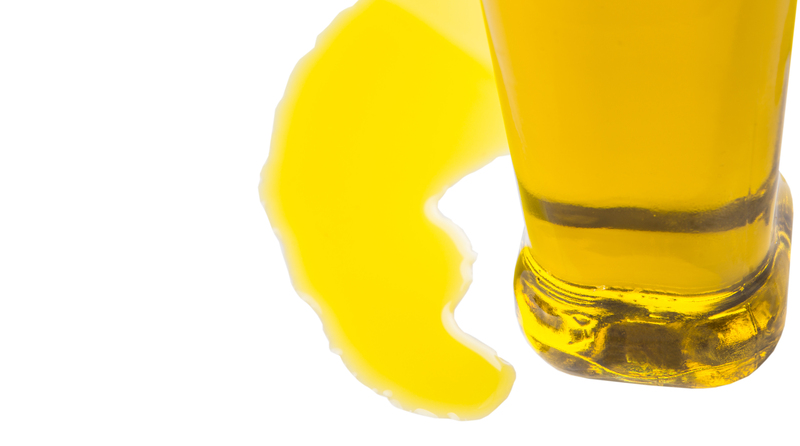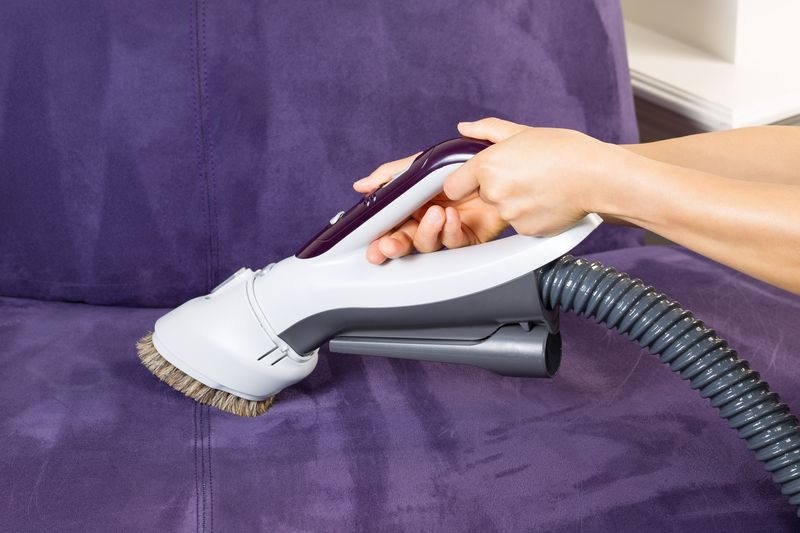Discovering Freshness: End the Plague of Damp Smells
Posted on 09/09/2025
Discovering Freshness: End the Plague of Damp Smells
Dampness and musty odors can turn a comfortable home into an unpleasant environment. If you've ever walked into a room and been greeted by that unmistakable musty smell, you're not alone. Damp odors are not only bothersome; they could signal underlying problems such as mold, mildew, or moisture buildup. In this comprehensive guide, you'll learn how to eliminate damp smells and enjoy true freshness throughout your home. Let's dive into the practical steps and science behind ending the plague of dampness once and for all!
Understanding the Plague of Damp Smells
Before tackling any problem, it's crucial to understand its causes. Damp odors often originate from excess moisture, poor ventilation, or water leaks. When water accumulates in hidden places, it can create the perfect habitat for mold and mildew--two major culprits behind foul smells.
Common Sources of Dampness and Musty Odors
- Basements & Crawl Spaces: These areas are prone to moisture due to being below ground level.
- Bathrooms: Humidity from showers and baths can linger without adequate ventilation.
- Kitchens: Water spills, steam from cooking, and leaking pipes are typical issues.
- Laundry Rooms: Damp clothes and poor air circulation contribute to the problem.
- Walls and Ceilings: Water damage from leaks in the roof or plumbing can cause hidden damp spots and mildew growth.
Why You Should Take Damp Smells Seriously
*Dampness isn't just an olfactory nuisance.* Persistent moisture can lead to health risks and structural damage. Mold spores pose respiratory hazards, especially for those with allergies or asthma. Furthermore, dampness deteriorates wood, drywall, and other materials over time, potentially costing thousands in repairs.

Detecting and Diagnosing Damp Smells and Sources
The first step in discovering freshness at home is to identify the source of the damp smell. Don't just mask the odor--find the root cause!
How to Sniff Out Trouble
- Follow Your Nose: Start by locating the area where the odor is strongest.
- Check for Visual Clues: Look for visible signs like water stains, mold spots, bubbling paint, or warped floors.
- Feel for Moisture: Touch suspicious walls or carpets. A damp texture often means a water issue.
- Test for Hidden Moisture: Use a moisture meter or press a clean tissue to suspect areas; any wetness indicates a problem.
Common Hidden Sources
- Behind Wallpaper or Paneling: Moisture can lurk undetected for years.
- Under Carpets and Rugs: Spills or leaks may go unnoticed until they start smelling.
- In Air Vents: HVAC systems can harbor mold if not properly maintained.
If you're unable to find the source, consider seeking professional help. Home inspectors and restoration experts have tools that can find dampness in hidden places.
How to Eradicate Damp, Musty Odors for Good
Once you've detected and diagnosed the issue, it's time to remove the unwanted moisture and reclaim your home's fresh scent. The solution is a combination of cleaning, drying, and prevention.
Step 1: Remove Moisture at the Source
- Fix Leaks: Repair any damaged pipes, plumbing, or roof areas to stop water from entering.
- Improve Drainage: Clean gutters and downspouts, ensuring water flows away from your home's foundation.
- Seal Cracks: Use waterproof sealant on windows, doors, or foundation cracks.
Step 2: Dry Out the Area
- Use Dehumidifiers: These machines pull excess moisture from the air and help keep humidity levels below 60%.
- Increase Ventilation: Open windows and use fans in problem areas. Good airflow is essential for discovering lasting freshness.
- Absorb Moisture: Place moisture absorbers like silica gel, activated charcoal, or baking soda in closets, basements, and other problem spots.
Step 3: Clean Thoroughly
- Wash or Replace Fabrics: Musty smells can cling to carpets, curtains, and soft furnishings. Wash them in hot water with a cup of vinegar for added deodorizing power or replace if smells persist.
- Deep Clean Hard Surfaces: Scrub walls, floors, and tiles with a mixture of water and white vinegar. For stubborn areas, use hydrogen peroxide or a commercial mold cleaner.
- Vacuum Regularly: Use a vacuum with a HEPA filter to remove mold spores trapped in carpets and furniture.
Step 4: Eliminate Residual Odors
- Baking Soda: Sprinkle it on carpets and let sit overnight before vacuuming.
- White Vinegar: Place bowls of vinegar in the room to neutralize lingering odors.
- Activated Charcoal: These odor-absorbing packets are effective and reusable.
- Essential Oils: Once the underlying smell is gone, add a finishing touch of freshness with oils like lavender, tea tree, or eucalyptus (always check for allergies first).
Remember, masking odors with air fresheners or scented sprays won't solve the problem. Only by removing moisture and cleaning thoroughly can you achieve a truly fresh home.
Preventing the Return: Freshness for the Future
Achieving a fresh-smelling home is only half the battle--you'll want to keep dampness and musty odors at bay for good. Here's how to prevent their return:
Best Practices and Daily Habits
- Keep Humidity Low: Use air conditioners, dehumidifiers, and fans as needed, especially during humid months.
- Ventilate Often: Open windows for at least a few minutes daily, especially after cooking, showering, or drying clothes indoors.
- Maintain Plumbing: Regularly inspect pipes, faucets, and appliances for leaks.
- Clean Up Spills Immediately: Even a little water left sitting can cause big problems over time.
- Declutter: Organize storage spaces to ensure air can circulate freely, preventing hidden moisture patches.
Seasonal Home Maintenance Checklist
- Spring: Inspect gutters, downspouts, and foundation for leaks; start using dehumidifiers.
- Summer: Keep air moving with fans; monitor humidity closely during muggy weather.
- Fall: Seal any cracks in windows or siding before rain season; check basement/crawlspace for moisture.
- Winter: Watch for condensation on windows and pipes, especially during freezing/thawing cycles.
By making these habits routine, you'll ensure your living space remains fresh--no more "damp house" worries!
Top Products to Banish Damp Smells
Sometimes, professional products can help discover freshness faster. Here are some highly rated options to consider:
- Dehumidifiers: Brands like Frigidaire, hOmeLabs, and Honeywell offer reliable moisture control for all room sizes.
- Baking Soda & Charcoal Bags: These natural odor absorbers are great for closets, cars, and shoes.
- Mold & Mildew Cleaners: Concrobium and RMR-86 are popular for removing persistent stains and odors.
- HEPA Vacuums: Dyson and Shark models target fine particulates, including mold spores.
*Always read labels and use products as directed, especially when treating surfaces or fabrics.*
Natural Remedies to End Dampness and Enjoy Lasting Freshness
If you prefer environmentally friendly methods, there are plenty of natural ways to fight damp odors in your home:
- Baking Soda: Safe, affordable, and effective for absorbing moisture and neutralizing odors.
- Cedar Blocks: Place in closets to discourage mold and impart a pleasant scent.
- Lemon: Use juice or peel to infuse rooms with a clean aroma while combating bacteria.
- Salt: Bowls of salt can help pull humidity from small spaces.
- Houseplants: Certain plants (like peace lilies and Boston ferns) are known for their air purifying abilities.
- Tea Tree Oil: Naturally antifungal and great in small bowls around the house (2-3 drops per bowl of water).
Use these remedies in tandem with cleaning and moisture removal for optimum results.
When to Call Professionals for Damp Smells
If, despite your best efforts, the musty smell lingers or the dampness keeps returning, it's time to seek professional help. Serious water damage or entrenched mold may require expert remediation, such as:
- Mold Remediation Services: Certified pros can safely remove mold and advise on preventing its return.
- Plumbers: Persistent leaks or damp patches often require professional repairs.
- Building Inspectors: When purchasing a new home, always get a thorough inspection for hidden water issues.
Ignoring serious damp problems can lead to expensive repairs and long-term health risks. Don't delay if the problem is bigger than you can handle!

Discovering a New Level of Freshness: A Summary
- Identify and fix the source of moisture.
- Thoroughly clean all affected areas, fabrics, and surfaces.
- Use moisture absorbers and dehumidifiers to keep humidity in check.
- Adopt daily and seasonal routines to prevent dampness from returning.
- Use natural remedies or specialized products to keep your home smelling fresh.
With diligence and the right approach, you can transform any musty space into a haven of freshness. Banishing damp odors is more than a cosmetic fix--it's an investment in your home's value, safety, and your family's well-being. So take control today, discover true freshness, and put an end to the plague of damp smells once and for all.
Frequently Asked Questions: Ending the Plague of Damp Odors
What causes persistent damp smells in homes?
Persistent damp odors are often caused by ongoing moisture problems such as leaks, poor ventilation, or high humidity, which promote mold and mildew growth. Addressing these underlying issues is crucial for long-term odor removal.
How can I test for hidden dampness?
Use a moisture meter, or look for secondary signs such as peeling paint, warped wood, or persistent condensation. If in doubt, a professional inspection is recommended.
Can air fresheners solve damp odors?
Air fresheners can mask odors temporarily, but they won't solve the root cause. It's vital to remove moisture and thoroughly clean any affected areas for lasting results.
Are natural remedies effective for removing musty smells?
Yes! Remedies like baking soda, vinegar, and activated charcoal are effective at absorbing odors once the primary source of dampness is addressed.
Ready to end the plague of damp smells and start discovering freshness? Take these tips to heart and enjoy a cleaner, fresher home for years to come!





